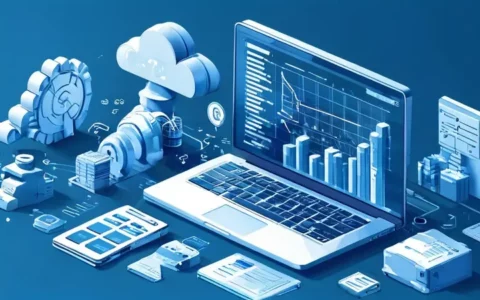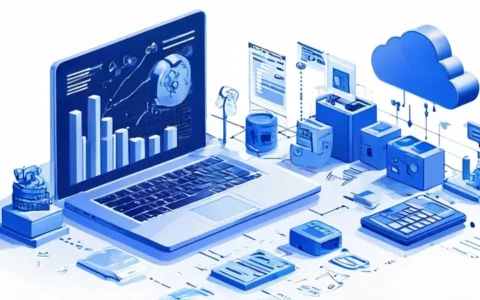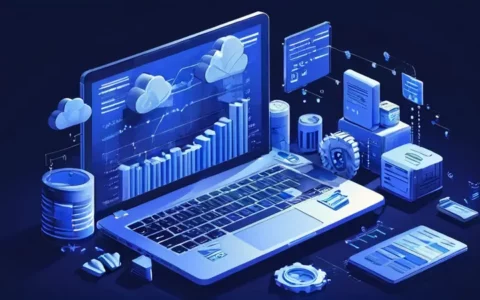
Marco programming, also often referred to as macro programming, is a technique where a sequence of instructions is represented as a single program statement, enhancing productivity and reducing errors. It's a process used in various applications, from office software to complex coding environments. To further expound, macro programming facilitates automation of repetitive tasks, which not only saves time but also ensures consistency across tasks. It allows users to create a set of instructions that can be executed with a single command or click. This especially becomes useful in tasks such as data entry, text editing, or even in complex software development where certain code blocks are used frequently.
I. INTRODUCTION TO MACRO PROGRAMMING
Macro programming is a powerful tool for streamlining workflow and enhancing the efficiency of repetitive tasks. It's particularly useful in environments where actions are repeated often, allowing users to focus more on creative and complex problem-solving rather than mundane tasks.
II. UNDERSTANDING MACRO COMMANDS
The core of macro programming involves creating macro commands. These are the building blocks that define the functionality of a macro and the specific task it automates. Learning how to craft these commands is essential for anyone looking to leverage the power of macros in their work.
III. MACRO PROGRAMMING IN DIFFERENT ENVIRONMENTS
While the concept of macro programming is consistent, its application can vary greatly across different software environments. Each environment may have its unique macro language or method of implementation, tailored to the specific tasks and functionalities common in that space.
IV. ADVANTAGES OF MACRO PROGRAMMING
One of the major benefits of macro programming is its capacity to save time. Automating repetitive tasks reduces the time spent on them, frees up resources for more important tasks, and generally increases productivity. Moreover, macros achieve a level of precision and consistency in tasks that might be prone to human error.
V. EXAMPLES OF MACRO USES
There are many practical applications of macro programming. In office software like Microsoft Excel, macros can automate complex calculations and data manipulations. In software development, macros can generate boilerplate code that is needed frequently, reducing the chance of errors and inconsistencies.
VI. LEARNING MACRO PROGRAMMING
Learning how to create macros often begins with understanding the scripting language or recording features provided by the software you are using. Many programs offer a 'record macro' feature which can capture a series of actions and allow you to replay them later.
VII. BEST PRACTICES IN MACRO PROGRAMMING
To effectively use macros, it is essential to follow best practices. This includes clear documentation of what each macro does, ensuring portability between different systems, and maintaining security, particularly when the macros involve the execution of more complex or sensitive operations.
VIII. CHALLENGES AND LIMITATIONS
While macro programming offers many advantages, there are also challenges and limitations. It is important to recognize that macros can introduce risks, such as security vulnerabilities if not properly managed. Also, they may not always translate well between different software versions or systems.
IX. THE FUTURE OF MACRO PROGRAMMING
The future of macro programming is poised to grow, particularly as industries aim for more automation and efficient workflows. Advanced technologies, like AI and machine learning, could potentially enhance macros further, making them smarter and even more adaptable to user needs.
By understanding and utilizing macro programming, users can significantly enhance their productivity and accuracy across a wide range of tasks. As software becomes more sophisticated, so too does the potential for macro use, ensuring that this tool will remain a staple in the toolkit of efficient and effective computer use.
相关问答FAQs:
什么是Marco编程?
Marco编程是一种编程技术,通过创建和操控宏来自动化任务和操作。宏是一系列预定义的指令或命令,可以按照特定的顺序执行,以完成特定的任务。Marco编程常用于增加生产率和简化重复性任务。
Marco编程有哪些应用场景?
Marco编程可以应用于各个领域,包括但不限于:
- 办公自动化:通过编写宏来自动化办公软件中的重复性任务,如数据处理、图表生成、报告生成等。
- 软件开发:Marco编程可以用于编写脚本和宏来简化软件开发过程中的一些常见任务,如自动化测试、模板生成等。
- 网络管理:Marco编程可以用于编写脚本和宏来自动化网络设备的配置和管理,提高网络运维的效率。
- 游戏开发:Marco编程可以用于编写游戏中的AI逻辑、任务脚本等,简化游戏开发过程。
如何学习和应用Marco编程?
学习和应用Marcor编程需要以下步骤:
- 选择合适的编程语言:Marco编程可以使用多种编程语言实现,如Python、JavaScript、VBA等。根据自己的需求选择合适的语言进行学习和应用。
- 学习基础知识:学习所选编程语言的基础知识,掌握语法、数据类型、函数等基本概念。
- 学习宏的概念:了解宏的概念和用法,学习如何创建和调用宏。
- 开发实践:选择一个具体的应用场景,通过编写宏来实现自动化任务。可以从简单的任务开始,逐步增加难度和复杂度。
- 学习和分享经验:参考官方文档、教程、论坛等资源,与其他人进行交流和分享经验,不断提升自己的技能。
文章标题:marco编程什么,发布者:飞飞,转载请注明出处:https://worktile.com/kb/p/1769767

 微信扫一扫
微信扫一扫  支付宝扫一扫
支付宝扫一扫 




